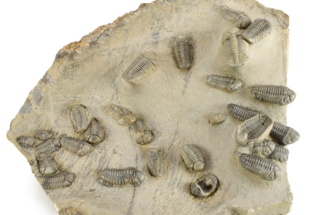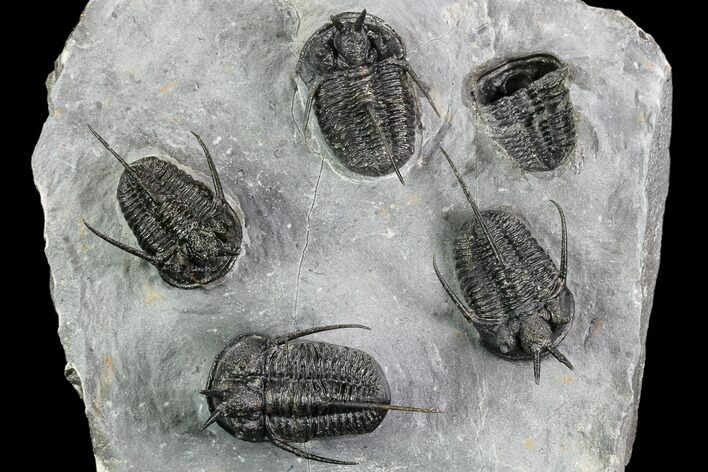This Specimen has been sold.
Exceptional "Devil Horned" Cyphaspis Trilobite Cluster
This is an exceptional cluster of five complete Cyphaspis walteri trilobites. They are all above average size for the species, four are preserved dorsally and one ventrally. All of the spines and horns have been free-stood on the trilobites. Very good prep work and one of the nicest Cypaphaspis multiple plates that I have seen.
This species was finally formally described in 2014. A link to the paper can be found below.
“Devil horned” Cyphaspis (Trilobita, Otarioninae): examples from the Middle
Devonian of the Ardennes (Belgium), Eifel (Germany) and Ma’der (Morocco)
This species was finally formally described in 2014. A link to the paper can be found below.
“Devil horned” Cyphaspis (Trilobita, Otarioninae): examples from the Middle
Devonian of the Ardennes (Belgium), Eifel (Germany) and Ma’der (Morocco)
About Trilobites
Trilobites are an extinct class of marine arthropods that thrived for nearly 270 million years, from the early Cambrian to the end of the Permian period (around 521 to 252 million years ago). They are one of the most successful and diverse groups in the history of life, with over 25,000 described species spanning a wide range of sizes, shapes, and ecological niches. Known for their distinctive, segmented exoskeletons, trilobites provide invaluable insights into the evolutionary history of arthropods and the dynamics of ancient marine ecosystems.
Trilobites are an extinct class of marine arthropods that thrived for nearly 270 million years, from the early Cambrian to the end of the Permian period (around 521 to 252 million years ago). They are one of the most successful and diverse groups in the history of life, with over 25,000 described species spanning a wide range of sizes, shapes, and ecological niches. Known for their distinctive, segmented exoskeletons, trilobites provide invaluable insights into the evolutionary history of arthropods and the dynamics of ancient marine ecosystems.
SPECIES
Cyphaspis walteri
AGE
LOCATION
Mrakib, Morocco
FORMATION
Bou Dib Formation
SIZE
Largest Specimen 1.65" long (including spines)
CATEGORY
SUB CATEGORY
ITEM
#108774
We guarantee the authenticity of all of our specimens.
 Reviews
Reviews































